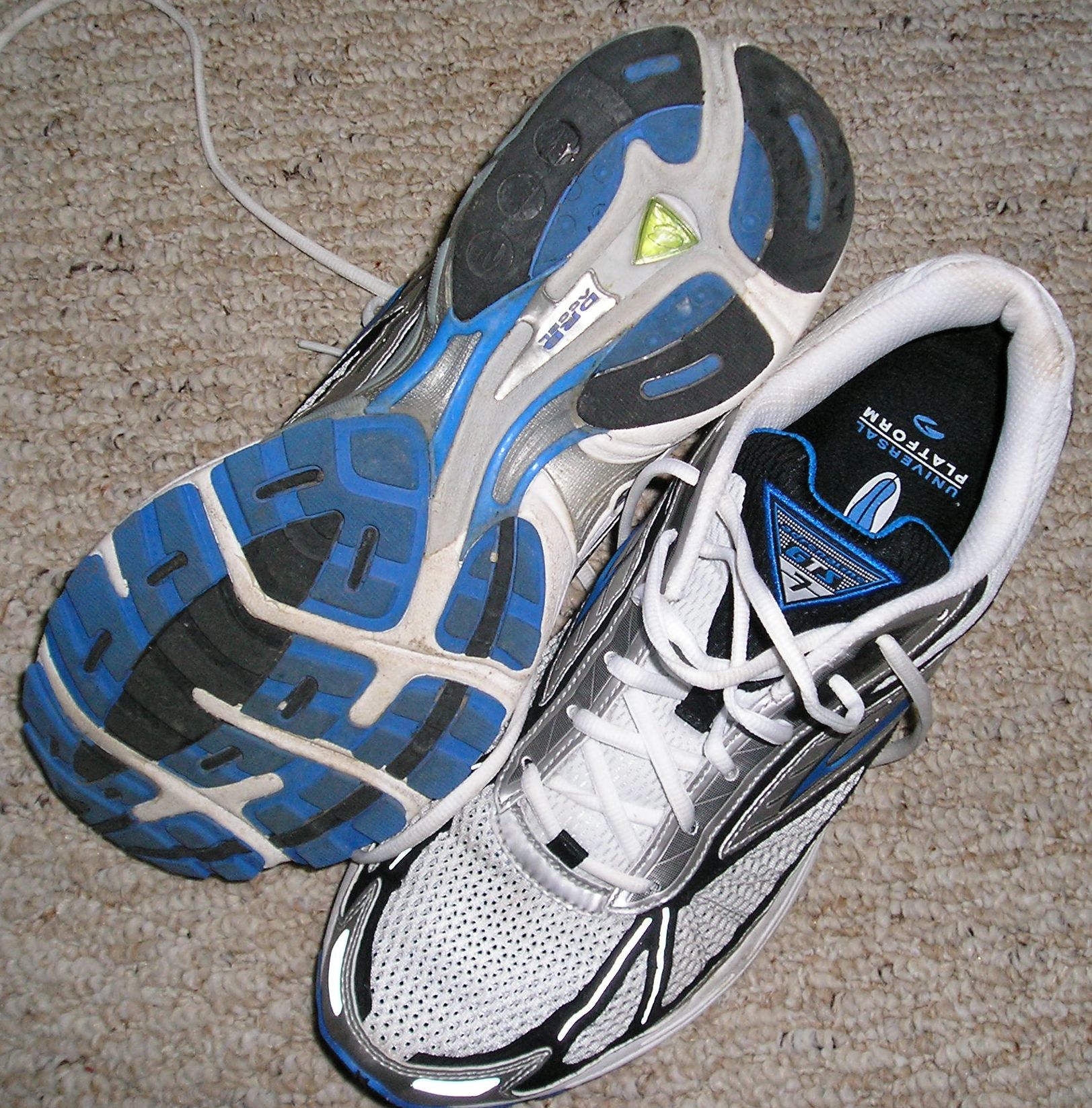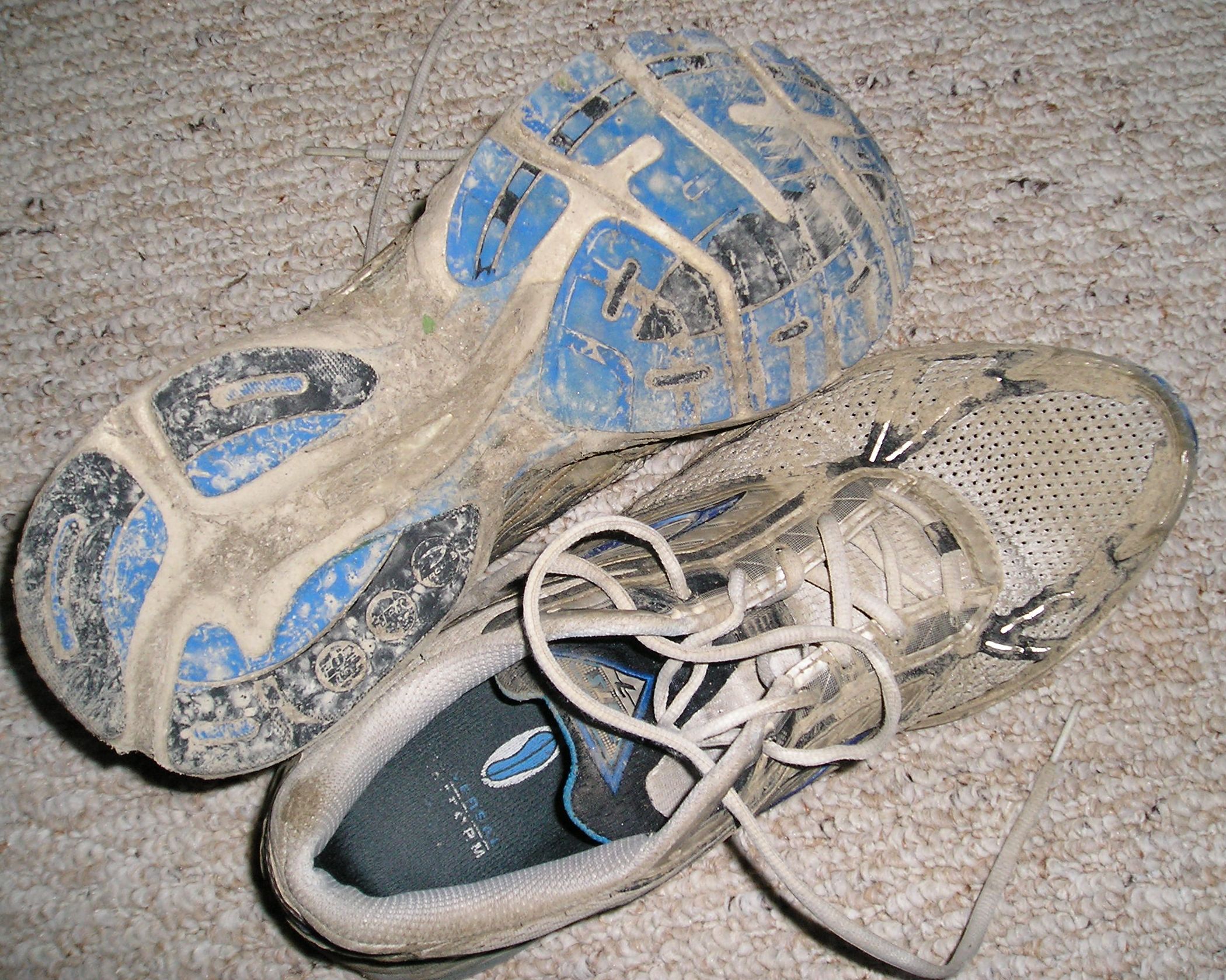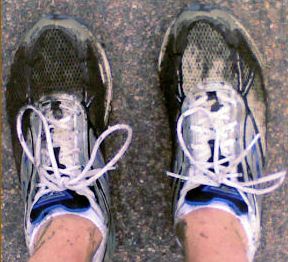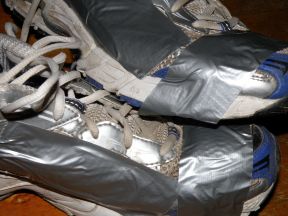Wow, the Saucony Kinvara feels amazing. It feels almost like a slipper when you put it on. The mesh upper is quite comfortable, felt snug, but also felt like there was still support. I think the sole is solid – firm but not overly stiff or with too much extra padding.
On my 3 mile run, I was able to experience a few different surfaces – concrete, asphalt, dirt, and gravel. I didn’t feel any rocks poke through the soles, like you might expect from a minimalist shoe. The neutral shoe felt really good through most of the run. I say most, because at around 2.5 miles my right leg started hurting a little bit. Now on any given run a random pain could show up, so I’m not gonna blame the Kinvara’s for that on this run (but I’ve not had any pain on my right leg before or since). Other than that it was like going for a run in my older shoes.
I really liked the fit and feel of the Kinvara. I was focused more on how the shoe felt than on my footstrike. I ran a new route but my time was several minutes faster than a 3 mile run in the past week and one of my faster runs in the past month. Again, I don’t want to give too much credit to the shoes specifically for that, because a lot of factors could play into running faster on any given day. But several minutes is fairly substantial without any noticeable difference in effort.
Overall my first run in the Kinvara actually went better than my first run in a new pair of ASICS – GT 2150 which is a stability shoe of the same ilk as I’d been wearing. My feet didn’t hurt, the didn’t seem to mind the lack of support found in the stability shoe.
The biggest problem, which I expected, was later in the day and the next day my ankles hurt on the sides of the achilles tendon. I’ve had this problem before with Saucony. I ran in Saucony a lot and bought a trail shoe to use for running and hiking for a summer in Yellowstone. Part way through the summer I strained my achilles and I’ve never been able to run in Saucony since. I actually traded my Saucony’s that summer with my roommate. Oddly, I was able to race in a Saucony flat, but never a trainer. Needless to say, this made me a little nervous about trying the Kinvara’s out and I wasn’t surprised when the sides of my achilles hurt. Fortunately, the pain went away by the end of the 2nd day.
Final Thoughts: I plan to give the Kinvara at least one more shot. I know to truly have an opinion about a shoe I need to give them a few tries, but that will all depend on the achilles. I will test them out on another short run and see how things go. I’m not sure if the achilles pain is something that will get strengthened over time or not. But I think that if I just add the Kinvara into my shoe rotation that I might be fine.
Just a reminder that I received my Kinvara’s free for the purposes of reviewing.
Related articles
- First Thoughts: Saucony Kinvara (teamcrossworld.com)






![Reblog this post [with Zemanta]](https://i0.wp.com/img.zemanta.com/reblog_e.png?w=625)




